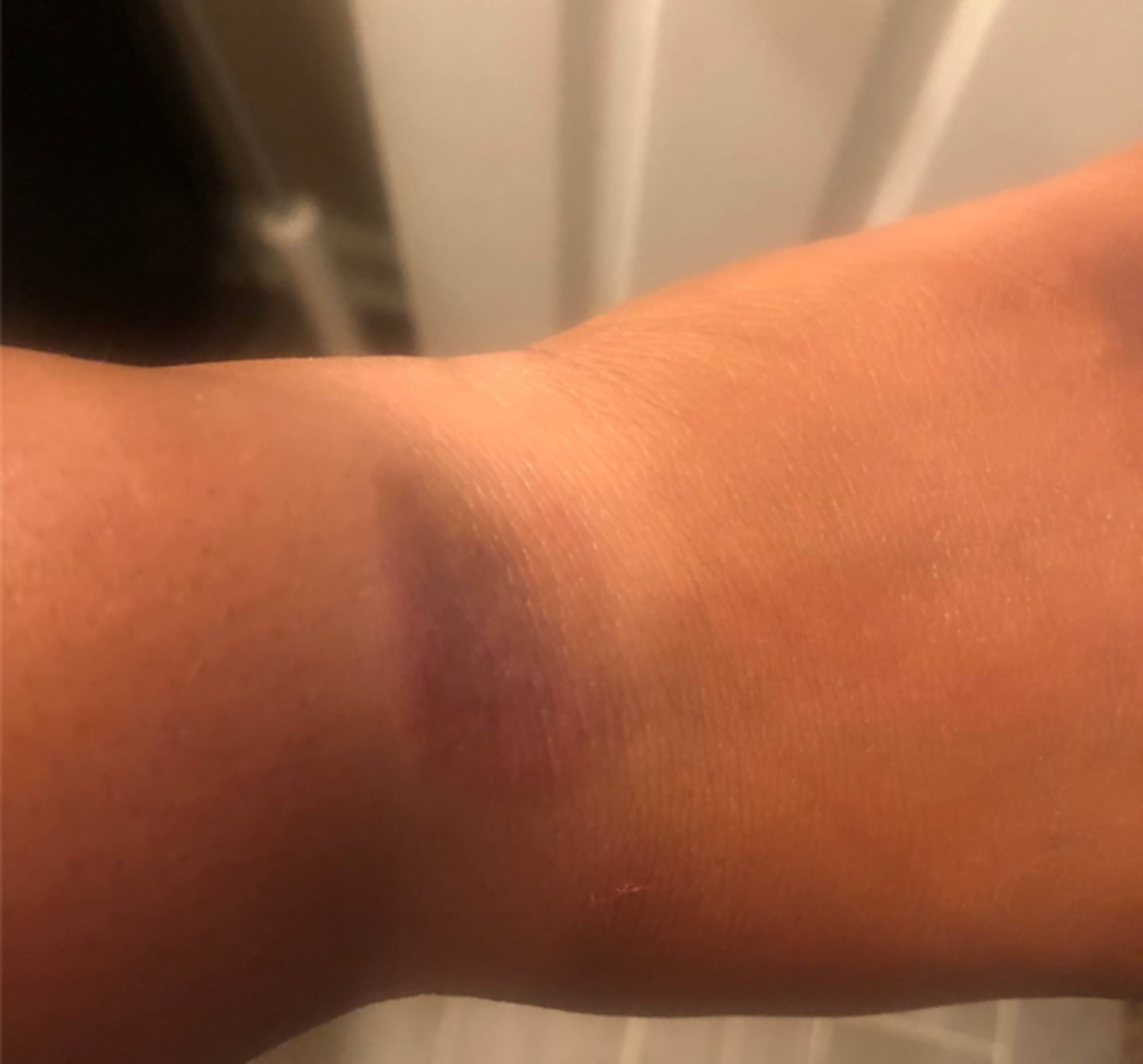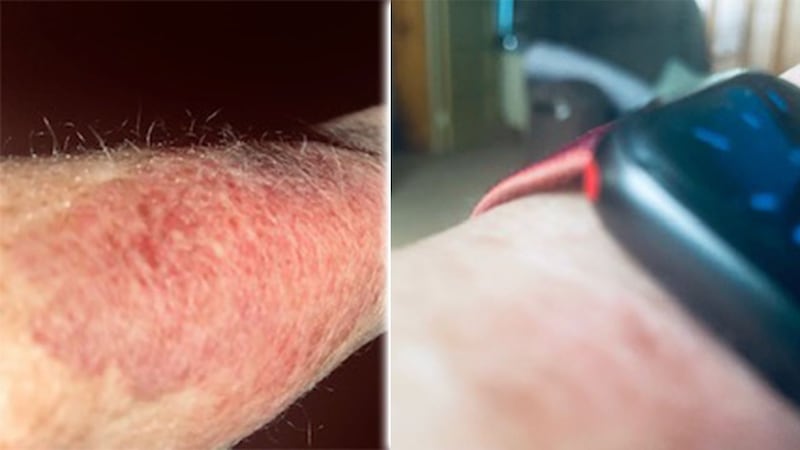CHARLOTTE — Action 9 is continuing to investigate complaints about Apple Watches and wrist injuries.
Channel 9 investigator Jason Stoogenke first reported on the problem last month. Now, another local woman told him she’s also experienced wrist problems, and she blames her Apple Watch.
Tiana Adams said she felt something on her arm one day under her Apple Watch band.
“My skin was so irritated. It was red. It looked like it was blistered,” she told Stoogenke. “As it started healing, it started chafing and burning and itching.”
Adams said she paid $300 for her watch.
“I paid too much money for it to be irritating my skin,” she said.
She told Stoogenke that she called Apple and requested a refund, but that the company said no. Now, she wants Apple to investigate its watches for skin reactions.
“It was a shock when it was me,” she said.
Apple did not provide Channel 9 a statement for the initial report. Stoogenke has contacted the company several times to report this second incident, but at the time of this publication, Apple has not responded.
Last month, Ann Bracey contacted Stoogenke about burns on her wrist that she said were caused by her Apple Watch.
“I need to know that the watch is safe or they need to make it safe,” Bracey said. “Lots of people wear these watches and they need to know that this can happen.”
Stoogenke checked Consumer Product Safety Commission records and found 18 complaints like Bracey’s. People claimed their Apple Watch caused “burns and parts of skin to peel away,” a “circular red patch,” “severe skin redness,” an “itchy, dry rash,” “skin irritation,” “burning” and “blisters.”
Channel 9 also found a news report from WABC in New York about a woman who claimed her Apple Watch heated up and burned her wrist. Apple said it tested the watch and that “it had not reached a temperature which would have caused any injury.” The company did give the woman a full refund, however.
The company’s website lists the materials in its watches and bands. It doesn’t mention anything about burns, but it does mention “potential skin sensitivities” and that a “small number” of people may “experience reactions to certain materials,” which the company says could be due to allergies, environmental factors, or extended exposure to irritants like soap or sweat.
Apple states on its website to:
- Keep your skin clean and dry.
- Be careful switching to bands not made by Apple.
- Make sure the band isn’t too tight or too loose.
(How to clean your Apple Watch)
Dr. Steven Feldman is a dermatologist with Atrium Health Wake Forest Baptist in Winston-Salem. He told Stoogenke one of his patients had a “skin rash following use of an Apple Watch.”
He and a medical student wrote a paper about it. They pointed out that:
- Many watches, including Apple, contain nickel, which “is associated with allergic” reactions.
- Customers “may wear smart watches tighter due to the presence of heart rate sensors.”
- The watch bands are “more likely to be made of synthetic polymers” with more “friction.”
Feldman thinks reactions are very rare.
“I wouldn’t even worry about this. I think it’s such an uncommon phenomenon, I wouldn’t pay it any mind when I was deciding what kind of watch to buy,” he said.
Stoogenke suggests that no matter what brand you buy, if you are buying a watch and have sensitive skin, you may want to check what materials are in the watch.
(WATCH BELOW: Woman claims Apple Watch caused injuries)
©2021 Cox Media Group










